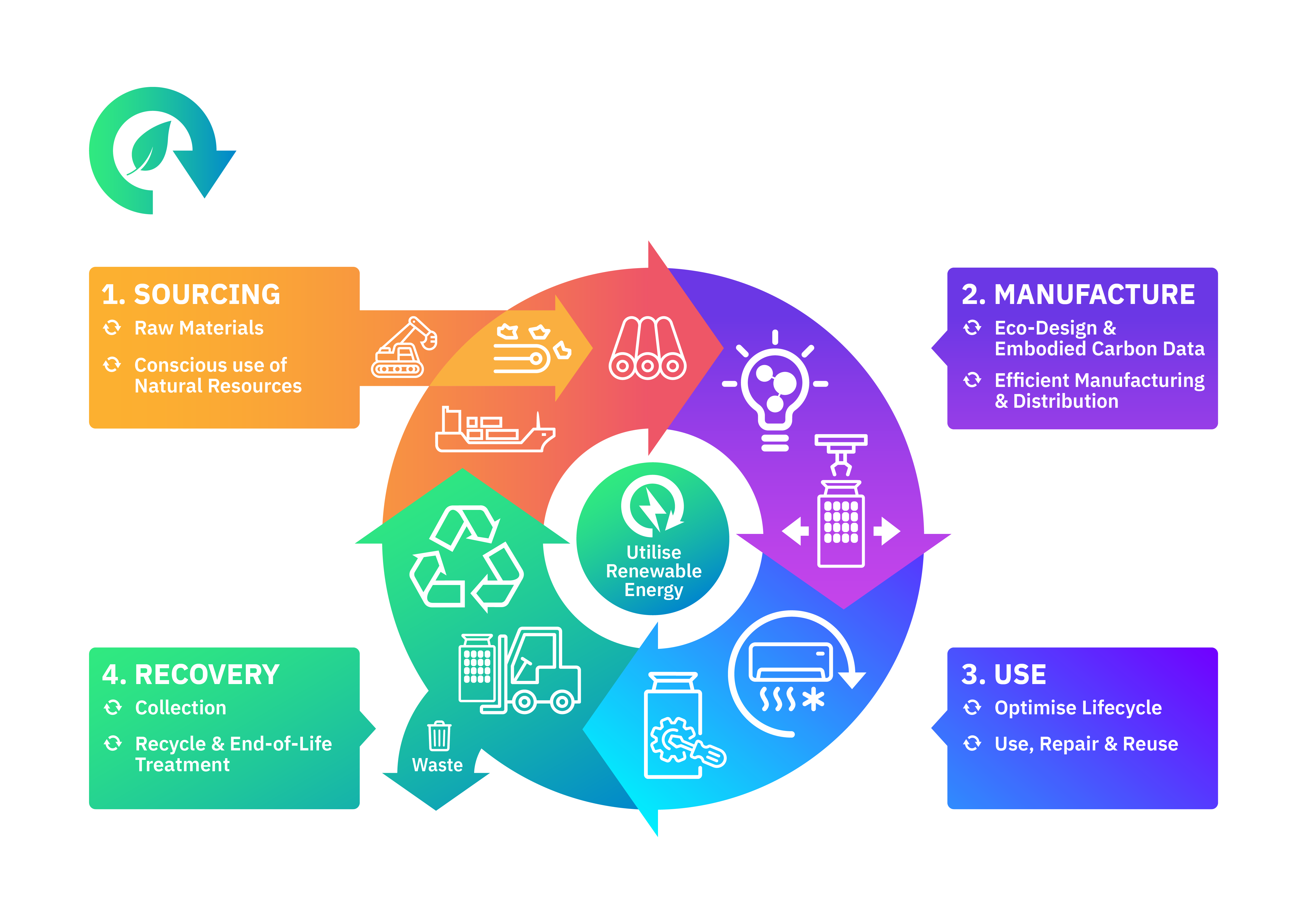What are the four principals of the circular economy

- One of Mitsubishi Electric’s key initiatives is to contribute to achieving a circular economy. An early milestone is to use 10% or more recycled plastics in our products and packaging by the end of 2024.
- In the long-term, our research and development includes reducing the size and weight of our products to reduce the amount of materials in them. We aim to achieve 100% effective use of "waste" such as plastics generated during our manufacturing processes.
- We will also be focused on eliminating waste along our supply chain and evolving the end-of-life recyclability of products that we produce.
How important is a circular economy for the environment?
Circular economy is so important for the environment that the European Commission put together an action plan to help reduce the pressure on natural resources back in 2020. The plan’s objectives are:
- Make sustainable products the norm in the EU.
- Empower consumers and public buyers.
- Focus on the sectors that use the most resources and where the potential for circularity is high such as: electronics and ICT, batteries and vehicles, packaging, plastics, textiles, construction and buildings, food, water and nutrients.
- Ensure less waster
- Make circularity work for people, regions and cities
- Lead global efforts on circular economy
So, it’s important that businesses and consumers do what they can to minimise waste and adopt a circular economy where possible. Not only does it have a huge impact on the sustainability of our planet, but also allows your business to reuse and recycle components to maintain an environmentally friendly business model.
Sustainability is important to each and every member of the Mitsubishi Electric team, and you can find out more about how we are taking steps to reduce our environmental impact on our sustainability page.
